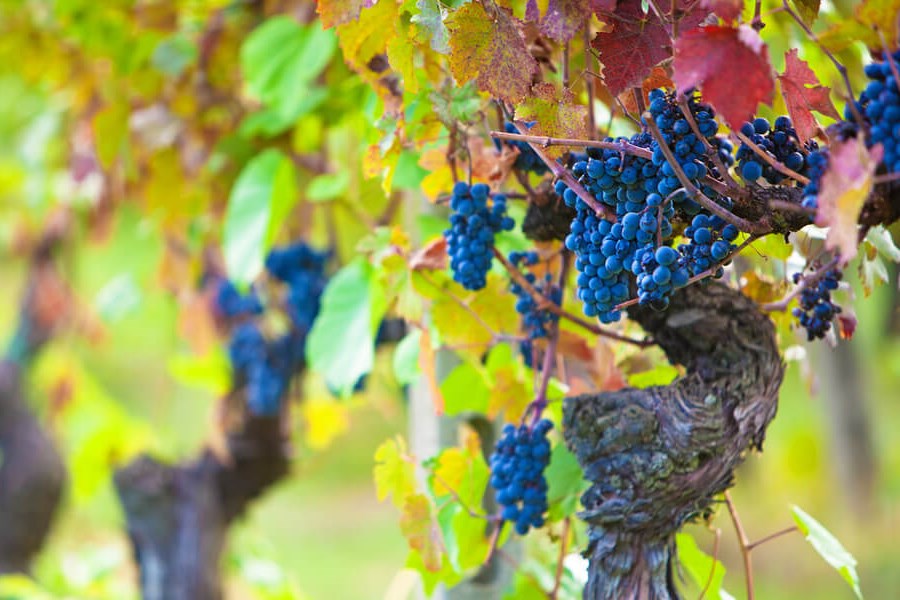Contrary to popular belief, the mineral notes you taste in wine are not from the soil. Studies show that soil does not drive the flavor of the wine. Grape growing is a complicated business!

Share this article
However, soil influences grape growing and wine production by affecting vine growth, and grape production. It is this process, that affects the taste of the wine.
Grape Growing
Compared to other crops, grape vines do not need fertile soil to be productive. In fact, grape vines thrive in soil that most farmers consider unfavorable. However, to produce quality grapes, the soil must meet specific conditions. Read further to find out!
Soil Texture
The perfect soil for grape growing is loose, aerated and well-drained. In particular, the soil should keep enough water for the vine and drain excess water to avoid over-saturation. Likewise, the soil should be able to retain and/or reflect heat to the vine as needed. This composition is specific, and not generally favorable to growing other types of plants. Water drainage is crucial as the quality of a grape will go down drastically if they “drown” in water.
pH Level
The pH level in the soil influences the vine’s ability to absorb nutrients. In fact, grapes growing in soil with the correct pH levels have excellent vegetative and fruit quality. Therefore, to grow productive grape vines, the soil should be slightly acidic with a pH level of 5.5–7.0. pH level is one of the most important factors with soil composition.
Macro-Nutrients
Macro-nutrients are vital for the health of the vines since they ensure the vineyard has perfect soil conditions for grape growing. They include minerals such as, Iron which aids in photosynthesis. Calcium, which helps neutralize the pH levels in the soil, and Nitrates, which promote healthy foliage and vine growth. As well as, Potassium which helps the vines to absorb moisture from the soil and regulate the acidity of the grape.
Trace Minerals
Adequate levels of magnesium and zinc in the soil are necessary for grape growing. Magnesium in the soil is necessary for healthy foliage since it affects vine growth and grape production. While, zinc in the soil is vital for increasing pollination rates, which in turn increase the grapes on the vines.
Take a look at some amazing organic wineries!
In fact, cooler climates with sandy soils produce intense, aromatic wines. While warmer climate wines are lighter and have soft tannins.
Perfect Soil
Since grape species thrive in different soil types, it’s impossible to state that there exists one perfect soil conditions for grape growing. However, the wine world has identified the following four soil types as the best for grape growing.
Sandy Soil
This is the ideal soil type for the grape vine’s to take root. Notably, the soil has at least 50% sand, retains heat and has loosely textured particles which drain water easily. Due to its porous nature, sandy soil is virtually resistant to pests like phylloxera, which thrive in wet soil.
The wine produced in wine regions with sandy soil differs depending on the climate. In fact, cooler climates with sandy soils produce intense, aromatic wines. While warmer climate wines are lighter and have soft tannins.
Swartland in South Africa, Cannubi, Northern Médoc and Graves in Bordeaux are wine grape growing regions with sandy soil conditions.
Loam Soil
With a sand, silt and clay ratio of 2-2-1 this soil is fertile and thought ideal for grape growing. Due to its unique composition of sand and clay, it retains the perfect amount of water. As well as absorbs important nutrients as a result of the silt.
Napa and Sonoma valleys are synonymous with loam soil conditions.
Clay Soil
Since it’s made up of tiny soil particles, clay soil retains water easily and stays cooler for longer periods of time. Furthermore, the unique qualities of clay soil ensure that the wine grapes ripen gradually. Consequently, the grapes produce a wine that has high acidity and high tannins.
Due to clay soil’s inability to drain water easily, it is prone to becoming over–moisturized and cause rot in vines. Furthermore, due to its heavy and compact nature, vines take a longer time to take root in the soil. Therefore, grape growing in clay soil requires keen viticulture management.
Wine growing regions like Rioja in Spain, Alberese in Tuscany and Barossa valley have clay soil. These regions are famous for producing some of the worlds’ boldest wines.
Silt Soil
Fine grains of soil and sand make up silt soil. Therefore, it’s incredibly fertile as it retains water and heat perfectly. Additionally, its compact nature increases its ability to absorb nutrients and feed the vines. However, this soil erodes easily making it difficult for grape vines to take root.
Oregon, Washington has silt soil and produces an exquisite Pinot Noir.
Although soil does not directly influence the flavor of wine, it affects wine production in two major ways. Including, regulating climate fluctuations and creating the perfect conditions for grape growing. Therefore, it is important for viticulture management to note the perfect soil conditions needed to produce excellent wines.